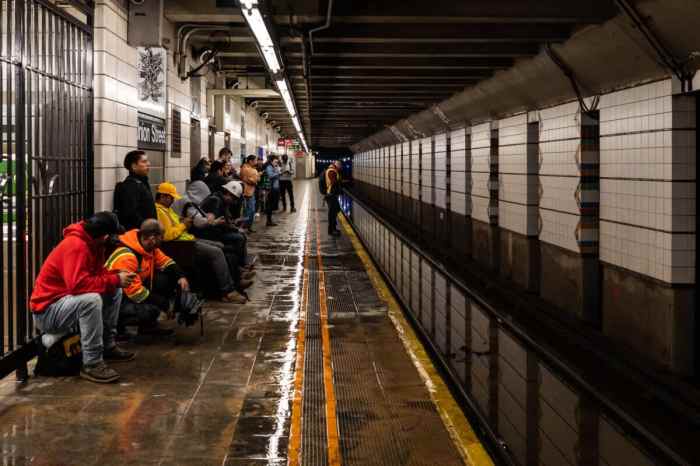Crowds gathered within minutes on Penn Square after pouring out of City Hall and surrounding Center City skyscrapers.
Little did downtown’s masses know — waiting in confusion for about 45 minutes to an hour — that one of the East Coast’s strongest earthquakes ever had just struck.
“I thought we were about to be attacked. I was on the 46th floor and that was the first thing you think of,” said Tasha Odom, who works in the Comcast Center. “You don’t think of an earthquake. It was scary.”
City courts closed early after the 5.8-magnitude earthquake hit outside Richmond, Va., at 2:51 p.m. today. The earthquake, about 3.7 miles deep, left seismologists scrambling to determine whether aftershocks could be expected soon. Experts from the U.S. Geological Survey said it would be unusual for aftershocks not to strike.
Jeremy Krafchin, who works on the 25th floor of the Comcast Center, said he thought “someone was moving a large piece of furniture for about 30 seconds.” Krafchin said everyone on his floor evacuated the building, but “was pretty calm.”
“I’m just worried about the children at home for the summer. My grandkids are probably sitting around saying ‘what the heck?’” financial specialist Yvonne Harris, 54, said. “They don’t know what an earthquake is.”
San Fran native stands firm
As the 14th floor of the building shook and rolled, my first reaction was “Wow, I must be really dehydrated.” Not till bewildered co-workers began asking what happened did I realize we had just been hit by an earthquake.
Growing up in the San Francisco bay area, I spent 13 years of school training and practicing earthquake drills. “Drop, cover and hold on” was drilled into my memory but, of course, when the quake hit Philadelphia yesterday, I continued to work.
The Pacific rim, notorious for its earthquakes, has had 39 earthquakes in California and more than 200 in Alaska in the last week alone.
Safer in a high-rise?
Whether they were on the eighth floor or the 58th, many urbanites were terrified to be trapped inside high-rises during yesterday’s tremble.
But a modern high-rise may actually be safer than a smaller building, says Jerry Hajjar, chair of the engineering department at Northeastern University.
“High-rises are built to sway more on a regular basis due to wind,” said Hajjar. “Compared to an old two- or four-story masonry walk-up … those are much stiffer,” and more susceptible to damage from a quake, he said.
For example, a new 30-story building is designed to sway back and forth about 9 inches. It’s not uncommon for buildings taller than 50 stories to sway a few feet, he said.
What to do if you’re in a high-rise
What to do if you’re in a high-rise and an earthquake hits?
“I would get under a desk so things don’t fall on you,” said Larry Brown, a Cornell University seismology professor. “Book cases, falling lamps, get away from those things.”
As far as fleeing the building itself, in a serious quake you likely won’t have time to get outside, said Brown, especially if you’re high up.
“You obviously don’t want to get in the elevator but it may not be a bad idea to go down the stairwell because stairwells are reinforced,” he said. “In an urban environment, you are actually safer inside than out because of falling glass.”






























